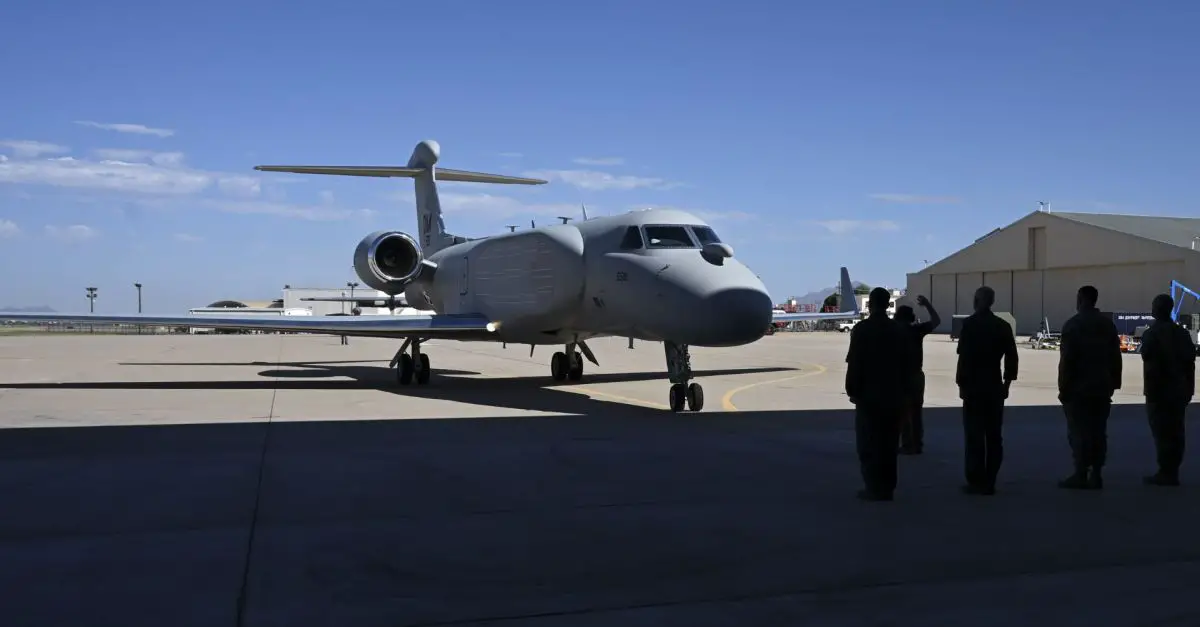Breaking News
Air Force Delivers Its First EA-37 Electronic Attack Aircraft to Home Base.
The first EA-37 Compass Call aircraft ready to undertake an Air Force mission took off last week for Davis-Monthan Air Force Base in Arizona, marking the beginning of a major upgrade to the service's electronic warfare fleet. The EA-37 replaces the aging and struggling EC-130H Compass Call. By the end of the 2023 fiscal year, only six aircraft remained in the fleet, with an average age of 49 years and a mission capability rate of only 33%. Since then, another aircraft has been retired, leaving only five in service. The EC-130 fulfilled its role for years, but this new airframe and its delivery signify a real increase in capability.
Follow Army Recognition on Google News at this link

EA-37B arrived on Davis-Monthan AFB on August 23,2024 (Picture source: US Air Force)
"The EA-37B is the right choice at this time, as we continue to shift towards great power competition, and we face adversaries who are developing long-range kill chains and anti-access/area-denial capabilities," the Air Force said in a statement.
The Compass Call will enable operations in both the non-kinetic and electromagnetic spectrums, providing advantages to U.S. forces. This aircraft is a signal intelligence platform, capable of listening to and acting on the communications of a potential enemy.
An electronic attack aircraft is a term that refers to an aircraft capable of intercepting and disrupting enemy communications. The missions of such a platform are varied: signal detection, interception, signal disruption, and communication relay. Originally designed for intelligence, combat situations now necessitate this aircraft for more offensive missions, as communication is essential for conducting operations, whether for coordination or reporting purposes. Successfully cutting off communications from a unit essentially neutralizes the combat effectiveness of that unit.
Based on a modified Gulfstream G550 business jet by L3Harris, the EA-37’s mission equipment is built by BAE. In September 2023, the first jet was delivered to the Air Force for testing.
The new aircraft will be capable of jamming radars, electronic systems, and communications. It will also play a role in the Suppression of Enemy Air Defenses (SEAD) mission by disrupting the enemy’s ability to coordinate sensors and command-and-control weapon systems that target friendly aircraft.
It will also have superior speed and altitude compared to the EC-130: the EA-37B can fly at 40,000 feet and 600 knots, versus a ceiling of 25,000 feet and 300 knots for the EC-130. At Davis-Monthan, the first aircraft will be used for pilot training, with another jet expected to arrive before the end of the year and five more in 2025. In total, the service plans to purchase 10 of these new aircraft.
This is all part of a series of changes to the Air Force's electronic warfare capabilities and assets at Davis-Monthan, as well as more broadly to the overall capabilities of the U.S. Air Force. Since the retirement of the EF-111 in the late 1990s, the service's electronic attack capabilities have dwindled. The creation of the 350th Spectrum Warfare Wing a few years ago renewed attention on electronic warfare, and the new jet will add a new airborne element at a time when leaders have stated that electronic warfare is only growing in importance.
Meanwhile, Davis-Monthan is moving away from traditional platforms like the EC-130, HH-60G, and A-10 in favor of new aerial missions such as the EA-37, HH-60W, and a "power projection wing" for Air Force Special Operations Command. The service also established one of its first air task forces at the base last month.


























